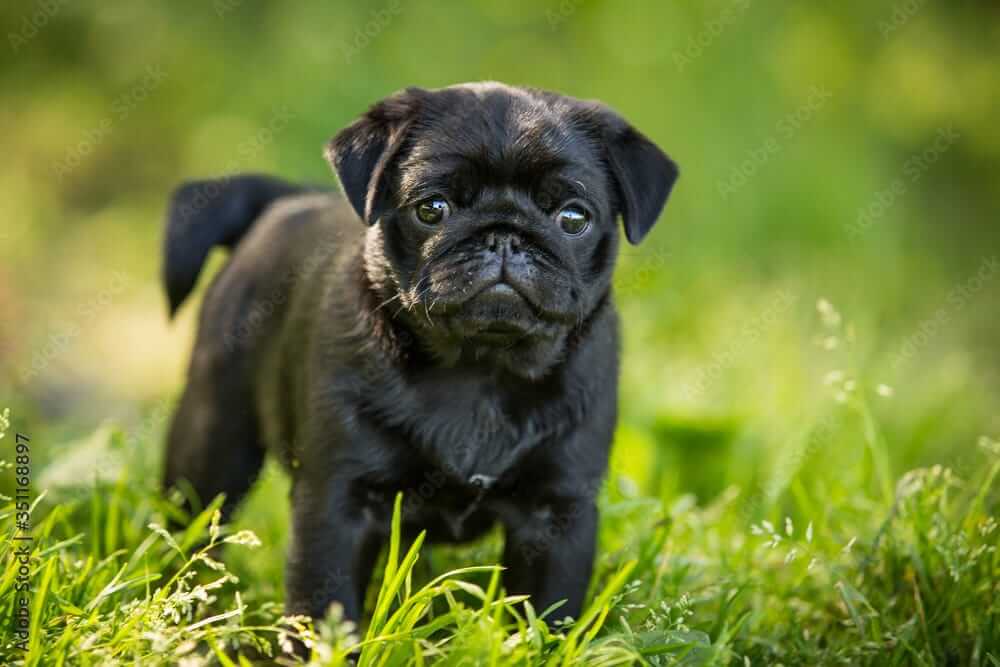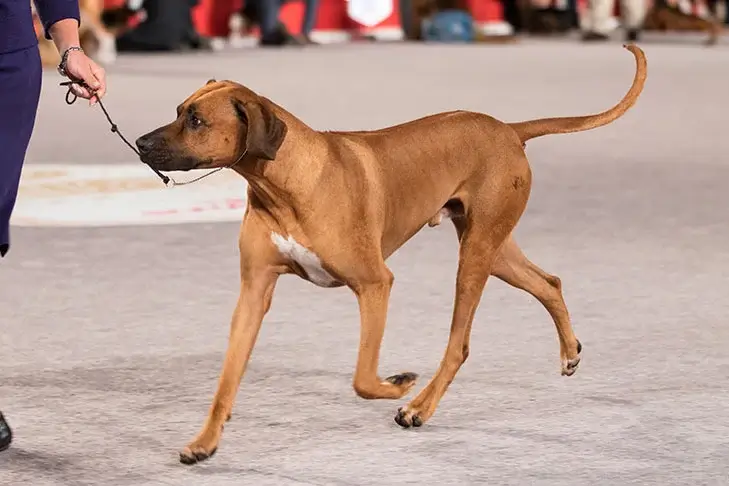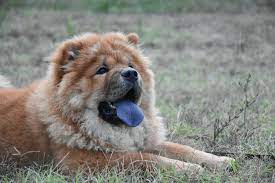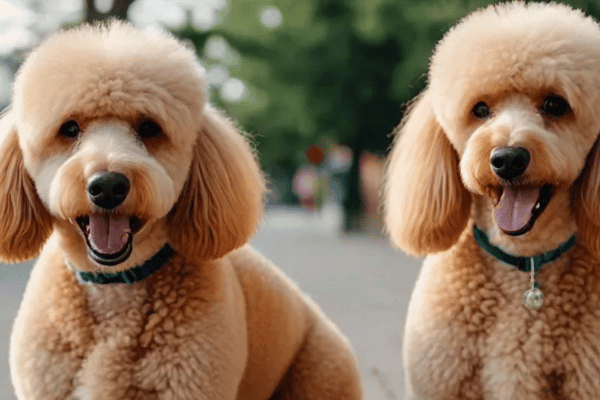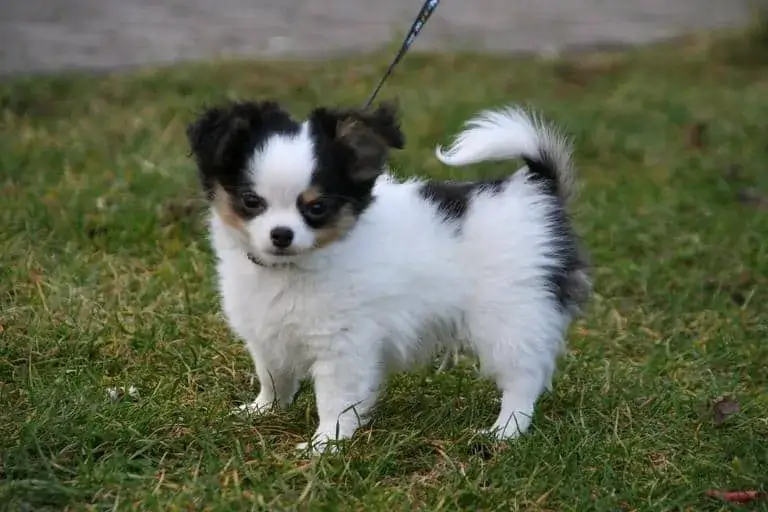Pug Dog Breed: Care, Temperament, and Facts
The Pug dog breed is beloved for its charming personality and distinctive appearance. Originating from China and later popularized in Europe, Pugs have captured the hearts of dog lovers worldwide. Known for their affectionate nature, playful demeanor, and wrinkled face, Pugs make excellent companions for a variety of households.
Contents
Physical Characteristics of Pugs
Size and Weight
Pugs are a small breed, typically weighing between 14 to 18 pounds and standing about 10 to 13 inches tall at the shoulder. Despite their compact size, Pugs have a sturdy and muscular build.
Coat and Colors
Pugs have a short, smooth, and glossy coat that comes in a variety of colors, including fawn, black, apricot, and silver. The most common color is fawn with a black mask on their face.
Distinctive Features
One of the most notable features of the Pug is its wrinkled face, which gives it a unique expression. Their large, round eyes and small, flat nose are also distinguishing characteristics. The Pug’s tail is tightly curled over the hip, adding to its distinctive appearance.
Pug Temperament and Personality

General Disposition
Pugs are known for their friendly and pleasant nature. They are affectionate with their family members and love to be the centre of attention. Pugs are also known for their playful and sometimes mischievous behavior.
Behavior with Family and Children
Pugs are excellent family pets. They are gentle and patient with children, making them a great choice for families with young kids. Their playful nature means they enjoy participating in family activities.
Compatibility with Other Pets
Pugs generally get along well with other pets, including dogs and cats. Their easy-going nature allows them to adapt to multi-pet households, provided they are properly socialized.
Health and Lifespan of Pugs

Common Health Issues
Pugs are prone to certain health conditions due to their unique physical features. Common issues include brachycephalic airway syndrome, hip dysplasia, and eye conditions such as dry eye and corneal ulcers. Regular veterinary check-ups are essential to monitor and manage these conditions.
Average Lifespan
The average lifespan of a Pug is between 12 to 15 years. Maintaining a healthy diet, regular exercise, and routine veterinary care can help ensure a longer, healthier life.
Tips for Maintaining Good Health
- Diet: Feed your Pug a balanced diet that is appropriate for its age and activity level. Avoid overfeeding, as Pugs are prone to obesity.
- Exercise: Pugs require moderate exercise to keep them fit. Daily walks and playtime are important, but be mindful of their breathing difficulties, especially in hot weather.
- Grooming: Regular grooming helps keep their coat healthy and reduces shedding. Please pay special attention to cleaning their facial wrinkles to prevent infections.
Care and Grooming Needs
Grooming Requirements
Pugs have low grooming needs compared to other breeds. Regular brushing helps to control shedding and keeps their coat in good condition. Bathing should be done as needed, using a mild dog shampoo.
Feeding and Nutrition
Provide high-quality dog food that meets the nutritional needs of small breeds. Monitor their weight closely and adjust portions to prevent obesity. Fresh water should always be available.
Exercise Needs
While Pugs do not require extensive exercise, they do need daily physical activity to maintain a healthy weight and prevent boredom. Short walks and interactive play sessions are ideal.
Training and Socialization
Training Tips and Techniques
Pugs are intelligent and eager to please, making them relatively easy to train. Use positive reinforcement techniques such as treats and praise. Consistency and patience are key to successful training.
Socialization with Other Dogs and People
Early socialization is important for Pugs to develop into well-adjusted adults. Introduce them to a variety of people, animals, and environments during their formative months. This helps prevent behavioral issues and promotes a friendly demeanour.
Behavioral Challenges and Solutions
Pugs can be stubborn at times, which may pose a challenge during training. Establishing a routine and being consistent with commands can help mitigate this. Additionally, addressing separation anxiety with gradual desensitization and providing stimulating toys can help keep them calm when alone.
Living with a Pug
Ideal Living Conditions
Pugs are adaptable and can thrive in various living environments, from apartments to houses. They are indoor dogs and prefer being close to their family. Ensure they have a comfortable and safe space to rest.
Adaptability to Different Environments
Pugs are versatile and can adapt to different living conditions. However, due to their brachycephalic nature, they are sensitive to extreme temperatures. Keep them cool in the summer and warm in the winter.
Pug’s Suitability for Different Lifestyles
Pugs are well-suited for families, singles, and seniors alike. Their moderate exercise needs and affectionate nature make them great companions for a wide range of lifestyles.
Fun Facts and Famous Pugs
Historical Anecdotes
Pugs have a rich history, dating back to ancient China where they were kept as lapdogs by Chinese emperors. They later became popular in Europe, particularly with Dutch royalty.
Pugs in Popular Culture
Pugs have made their mark in popular culture, appearing in movies, TV shows, and as beloved pets of celebrities. Their distinctive appearance and charming personality have made them a favorite among dog lovers.
Famous Pug Owners
Throughout history, many notable figures have owned Pugs, including Queen Victoria, Napoleon’s wife Josephine, and modern celebrities like Jessica Alba and Gerard Butler.
Choosing a Pug Puppy
Finding a Reputable Breeder
When looking for a Pug puppy, it’s important to find a reputable breeder who prioritizes health and temperament. Ask for health clearances of the puppy’s parents and visit the breeder’s facility to ensure proper conditions.
Adoption Considerations
Adopting a Pug from a rescue organization or shelter is a wonderful option. Many Pugs in need of homes are available for adoption, and it can be a rewarding experience to provide a loving home to a dog in need.
What to Look for in a Healthy Puppy
A healthy Pug puppy should be active, alert, and have clear eyes and a clear coat. Check for signs of good health, such as proper weight, clean ears, and a playful disposition.
Conclusion
Owning a Pug is a delightful experience filled with joy and companionship. Their affectionate nature, playful personality, and adaptability make them a wonderful addition to any home. With proper care, training, and love, a Pug can be a loyal and cherished member of your family for many years.
Top FAQs about Pug Dogs
What are the common health issues in Pugs?
Pugs are prone to several health problems due to their brachycephalic (flat-faced) nature. Common issues include:
- Brachycephalic airway syndrome.
- Hip dysplasia.
- Eye conditions like corneal ulcers and dry eye.
- Skin infections in facial wrinkles.
Regular veterinary check-ups are essential to manage and monitor these conditions.
How much exercise does a Pug need?
Pugs require moderate exercise to stay healthy and maintain a proper weight. Daily walks and play sessions are sufficient, but care should be taken to avoid overexertion, especially in hot or humid weather. Due to their respiratory issues, short and frequent activities are better than long, strenuous ones.
Are Pugs good with children and other pets?
Yes, Pugs are generally good with children and other pets. They are known for their gentle and patient nature, making them excellent companions for kids. Pugs also tend to get along well with other animals if properly socialized from a young age.
What should I feed my Pug?
A balanced diet that meets the nutritional needs of a small breed is ideal for Pugs. High-quality commercial dog food formulated for small breeds is recommended. It’s important to monitor their calorie intake to prevent obesity, a common issue in Pugs. Fresh water should always be available.
How do I groom a Pug?
Pugs have low grooming needs but benefit from regular brushing to control shedding and keep their coat healthy. Their facial wrinkles should be cleaned regularly to prevent infections. Bathing should be done as needed, using a mild dog shampoo. Regular dental care, ear cleaning, and nail trimming are also important parts of a Pug’s grooming routine.
- Golden Retriever Pros and Cons: What Every Pet Parent Should Know - 15 September 2025
- Cane Corso Dog Breed: Health, Care, and Lifespan - 14 September 2025
- Catahoula Leopard Dogs: Description, Temperament, Lifespan, & Facts - 21 July 2025

